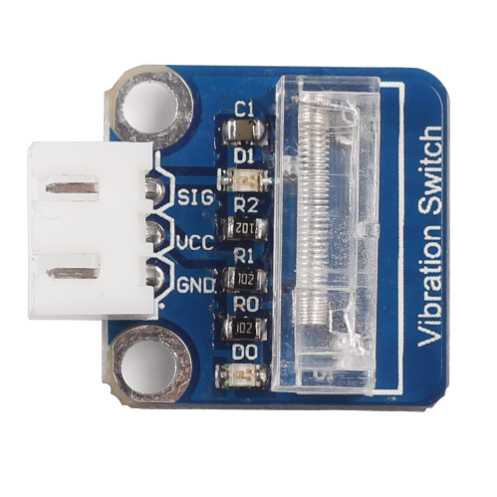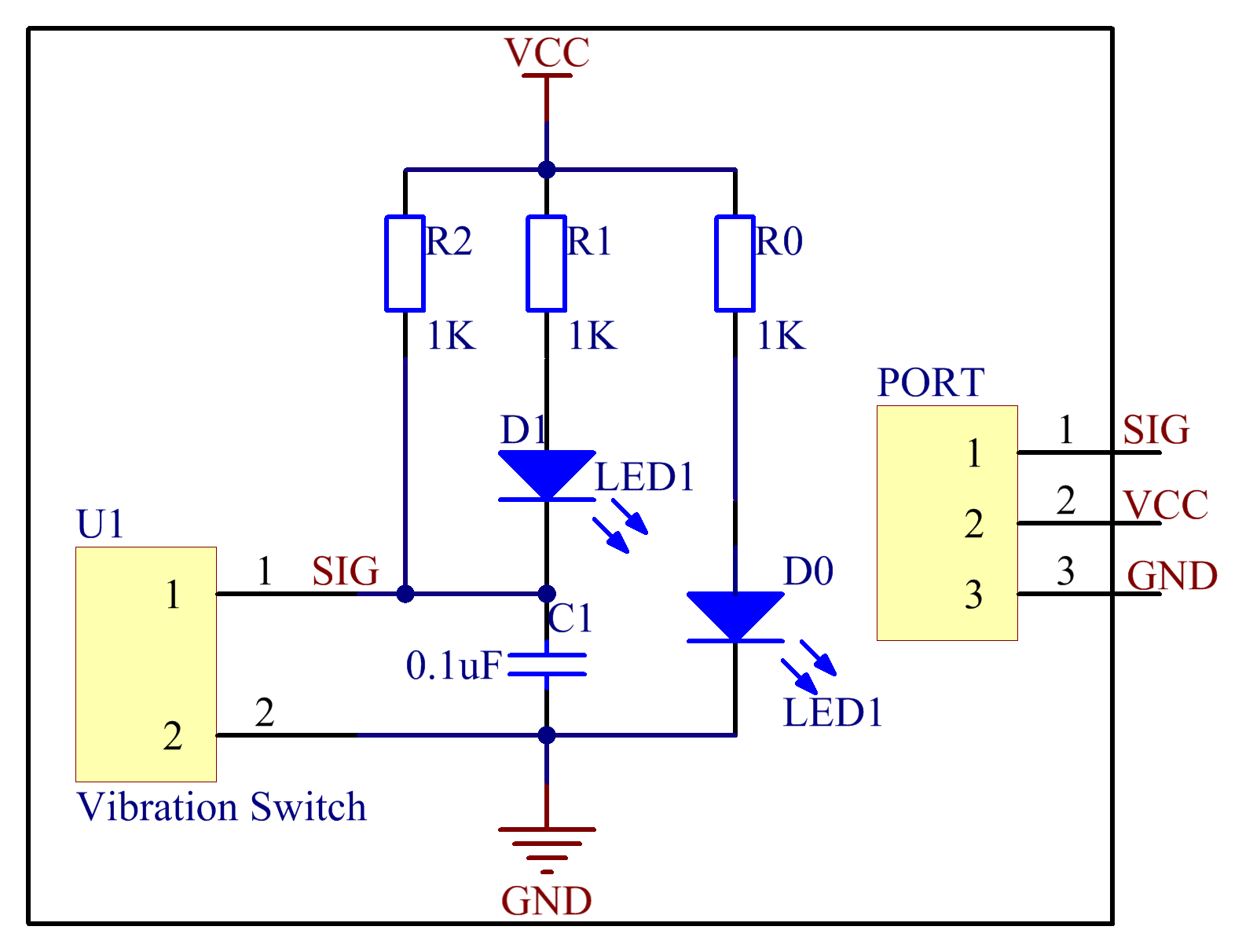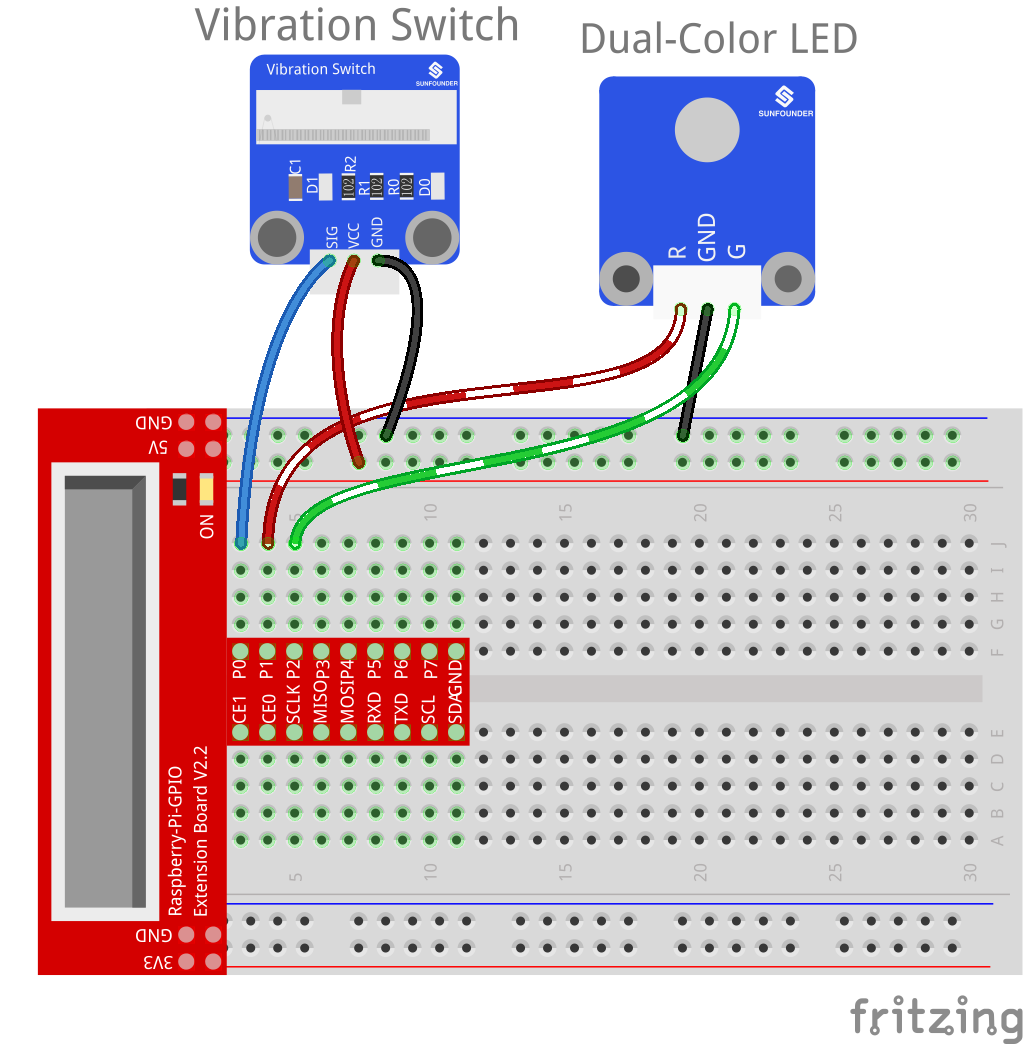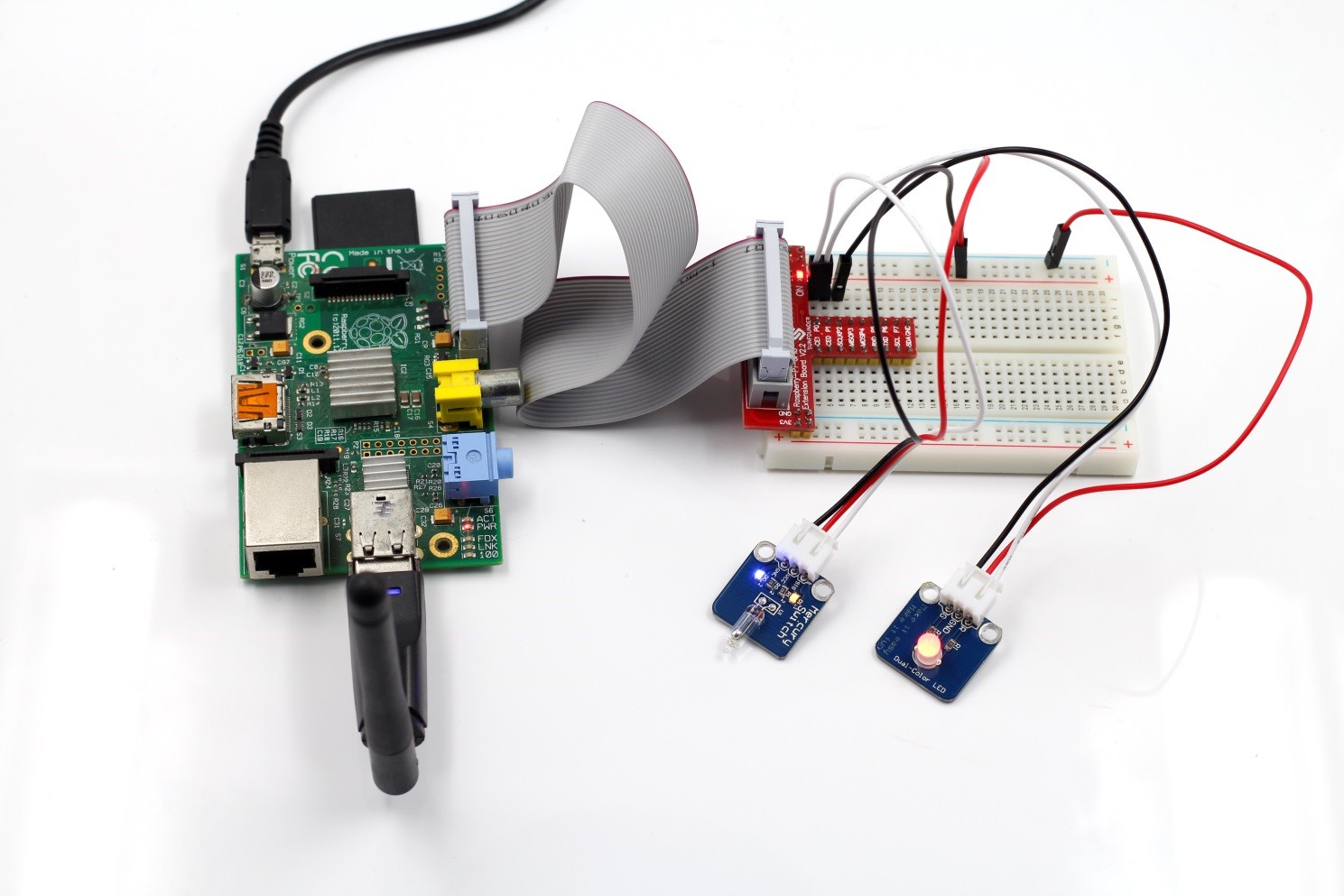Introduction
A vibration switch, also called spring switch or shock sensor, is an electronic switch which induces shock force and transfers the result to a circuit device thus triggering it to work. It contains the following parts: conductive vibration spring, switch body, trigger pin, and packaging agent.

Components
– 1 * Raspberry Pi
– 1 * Breadboard
– 1 * Network cable (or USB wireless network adapter)
– 1 * Dual-color LED module
– 1 * Vibration switch module
– 2 * 3-Pin anti-reverse cable
Experimental Principle
In a vibration switch module, the conductive vibration spring and trigger pin are precisely placed in the switch and fixed by adhesive. Normally, the spring and the trigger pin are separated. Once the sensor detects shock, the spring will vibrate and contact with the trigger pin, thus conducting and generating trigger signals.
In this experiment, connect a dual-color LED module to the Raspberry Pi to indicate the changes. When you knock or tap the vibration sensor, it will get turned on and the dual-color LED will flash red. Tap it again and the LED will change to green – just between the two colors for each tap or knock.
The schematic diagram:

Experimental Procedures
Step 1: Build the circuit
| Raspberry Pi | Vibration Switch Module |
| GPIO0 | SIG |
| 5V | VCC |
| GND | GND |
| Raspberry Pi | Dual-Color LED Module |
| GPIO1 | R |
| GND | GND |
| GPIO2 | G |

For C language users:
Step 2: Change directory
cd /home/pi/SunFounder_SensorKit_for_RPi2/C/08_vibration_switch/
Step 3: Compile
gcc vibration_switch.c –lwiringPi
Step 4: Run
sudo ./a.out
For Python users:
Step 2: Change directory
cd /home/pi/SunFounder_SensorKit_for_RPi2/Python/
Step 3: Run
sudo python 08_vibration_switch.py
Now tap or knock the module and you can see the dual-color LED flash red. Tap the sensor again, and the LED will change to green. Each tap or knock would make it change between red and green.

C Code
#include <wiringPi.h>
#include <stdio.h>
#define VibratePin 0
#define Gpin 1
#define Rpin 2
int tmp = 0;
void LED(int color)
{
pinMode(Gpin, OUTPUT);
pinMode(Rpin, OUTPUT);
if (color == 0)
{
digitalWrite(Rpin, HIGH);
digitalWrite(Gpin, LOW);
}
else if (color == 1)
{
digitalWrite(Rpin, LOW);
digitalWrite(Gpin, HIGH);
}
else
printf("LED Error");
}
void Print(int x){
if (x != tmp){
if (x == 0)
printf("...ON\n");
if (x == 1)
printf("OFF..\n");
tmp = x;
}
}
int main(void)
{
int status = 0;
int tmp = 0;
int value = 1;
if(wiringPiSetup() == -1){ //when initialize wiring failed,print messageto screen
printf("setup wiringPi failed !");
return 1;
}
pinMode(VibratePin, INPUT);
while(1){
value = digitalRead(VibratePin);
if (tmp != value){
status ++;
if (status > 1){
status = 0;
}
LED(status);
Print(status);
delay(1000);
}
}
return 0;
}
Python Code
#!/usr/bin/env python
import RPi.GPIO as GPIO
import time
VibratePin = 11
Gpin = 12
Rpin = 13
tmp = 0
def setup():
GPIO.setmode(GPIO.BOARD) # Numbers GPIOs by physical location
GPIO.setup(Gpin, GPIO.OUT) # Set Green Led Pin mode to output
GPIO.setup(Rpin, GPIO.OUT) # Set Red Led Pin mode to output
GPIO.setup(VibratePin, GPIO.IN, pull_up_down=GPIO.PUD_UP) # Set BtnPin's mode is input, and pull up to high level(3.3V)
def Led(x):
if x == 0:
GPIO.output(Rpin, 1)
GPIO.output(Gpin, 0)
if x == 1:
GPIO.output(Rpin, 0)
GPIO.output(Gpin, 1)
def Print(x):
global tmp
if x != tmp:
if x == 0:
print ' **********'
print ' * ON *'
print ' **********'
if x == 1:
print ' **********'
print ' * OFF *'
print ' **********'
tmp = x
def loop():
state = 0
while True:
if GPIO.input(VibratePin):
state = state + 1
if state > 1:
state = 0
Led(state)
Print(state)
time.sleep(1)
def destroy():
GPIO.output(Gpin, GPIO.HIGH) # Green led off
GPIO.output(Rpin, GPIO.HIGH) # Red led off
GPIO.cleanup() # Release resource
if __name__ == '__main__': # Program start from here
setup()
try:
loop()
except KeyboardInterrupt: # When 'Ctrl+C' is pressed, the child program destroy() will be executed.
destroy()
